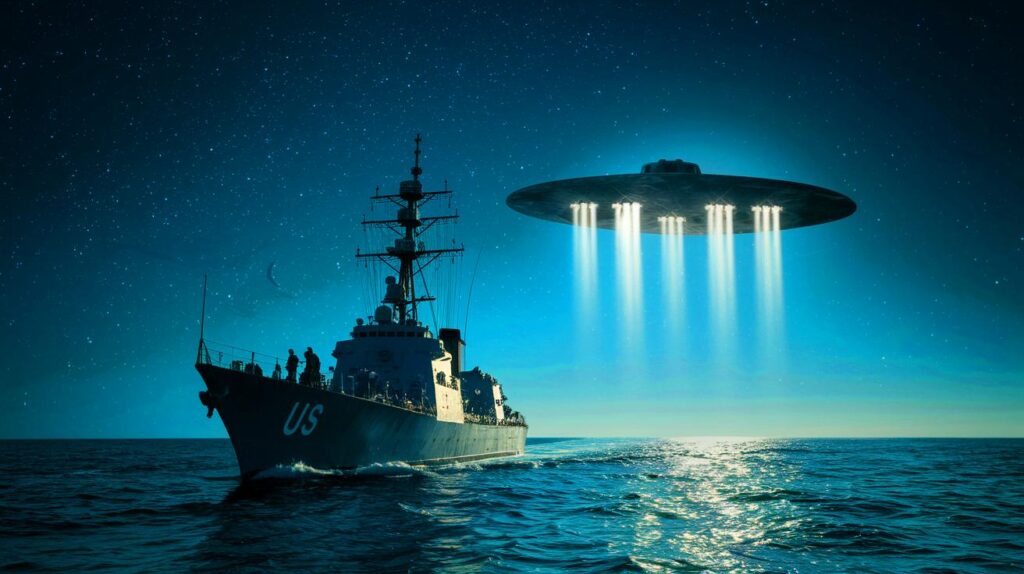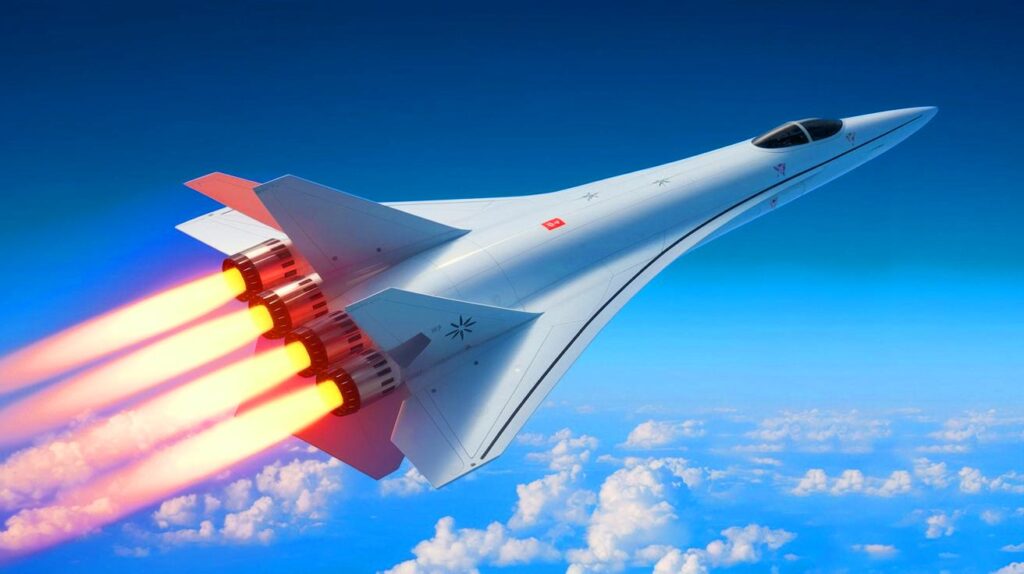| IN BRIEF |
|
In recent years, reports on unidentified aerial phenomena (UAP) have garnered increasing interest. One of the most captivating accounts comes from U.S. Navy operations specialist Alexandro Wiggins. This veteran, with 23 years of experience, sheds light on events that continue to defy our understanding of current technological capabilities. As these testimonies accumulate, the issue of transparency and communication regarding such phenomena becomes critical. How do military institutions manage this information, and what are the implications for national security?
UAP Emerging From The Ocean Surface
During a routine mission off Southern California in February 2023, Alexandro Wiggins experienced a surprising event. While monitoring airspace aboard the USS Jackson, he detected unusual radar returns. These anomalies led him to visually observe a bright object rising from the sea, defying conventional explanation. This phenomenon, with no apparent propulsion, resembles previous encounters with tic-tac-shaped objects reported by the U.S. Navy.
Using the SAFIRE system, Wiggins tracked the movement of these objects, whose behavior deviated from established norms. Four distinct objects, moving in formation, were observed. Their rapid acceleration towards the northeast, without thermal signatures or exhaust emissions, raises questions. According to Wiggins, these objects did not pose an immediate threat, which is why no official report was filed. Nevertheless, his testimony adds to the growing documentation of UAP in this region often associated with unexplained aerial activities.
Not The First Incident
This was not Wiggins’ first encounter with such phenomena. In 2019, aboard the USS Omaha, he witnessed a series of incidents involving large spherical objects. These entities, capable of maneuvering around the ship for over an hour, were even seen submerging into the water. Although Wiggins does not consider himself a whistleblower, he emphasizes the importance of acknowledging the operational impact of these encounters.
The establishment of the All-domain Anomaly Resolution Office (AARO) by the Department of Defense aimed to centralize the analysis of these phenomena. Yet, doubts linger regarding the effectiveness of this entity. Active military personnel and veterans express reservations about the credibility of investigations, undermining the trust of frontline operators.
Trust and Transparency Under Scrutiny
Despite the absence of tangible feedback, skepticism is growing among those who have encountered these events. Marik von Rennenkampff, an analyst and former Pentagon official, has examined flight records from this time. His analysis confirms the absence of conventional aircraft near the USS Jackson during the events, ruling out the possibilities of civilian or military aerial activities.
Wiggins nostalgically expresses hope that these phenomena might one day be demystified, much like the stealth fighter or Area 51. But he fears this may happen too late to have a significant impact. Until then, the issues of openness and communication surrounding these incidents remain a major topic of debate.
Implications For The Future
Accounts like Wiggins’ raise essential questions about our understanding of the aerial environment. As technology continues to advance, the ability to identify and respond to these phenomena becomes a strategic challenge. Coordination between different military branches and civil agencies could prove crucial for ensuring safety and transparency.
As more witnesses come forward, authorities will need to adapt their protocols to address these challenges. The future of UAP investigations will depend on the willingness of institutions to embrace the complexities of these phenomena and provide transparent and evidence-based responses. What will be the next steps to understand and manage these issues that challenge our perception of reality?







